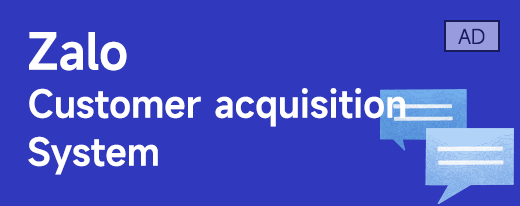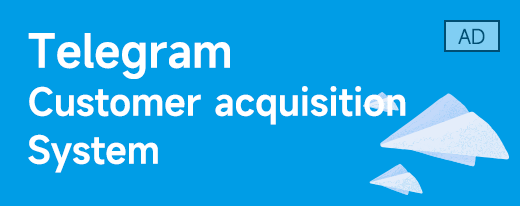In the era of refined private domain traffic operation, Telegram has become a core platform for enterprises to accumulate overseas private domains and realize monetization. To reach users accurately and improve conversion rates, the Telegram Precise User Portrait is the key—it can extract user needs and preferences from massive data, making operational actions "targeted". Most enterprises often fall into troubles due to messy data and vague labels when building Telegram Precise User Portrait, but with the ITG Global Screening Tool, the portrait can become a "growth engine" for private domain monetization. This article breaks down 5 core steps, explains practical key points and tool applications in detail, and helps enterprises drive the growth of Telegram private domain with data.
Step 1: Global Data Collection – Lay a Solid "Data Foundation" for Telegram Precise User Portrait
To build a Telegram Precise User Portrait, it is necessary to first collect data comprehensively and compliantly to ensure the authenticity and integrity of the portrait.
(I) Core Data Dimensions
The Telegram Precise User Portrait needs to cover four major dimensions: first, basic attributes (region, age, language, device type), which can be obtained through registration information and group entry questionnaires; second, behavior trajectory (link clicks, group interactions, content forwarding), which is recorded in real time by Telegram bots; third, demand preferences (consultation keywords, content feedback, communication time), which require analysis of chat records; fourth, consumption conversion (order history, repurchase frequency, reasons for non-conversion), which needs to be connected to the enterprise's CRM system.
(II) Role of ITG Global Screening Tool
The tool can solve three major pain points in data collection: it has a built-in global compliance rule database to identify data that requires user authorization and avoid legal risks; it removes duplicates through user ID matching and eliminates invalid data such as blank questionnaires to ensure "clean" data; it integrates multi-channel data (bots, CRM, etc.) to form a complete user profile, laying the foundation for the Telegram Precise User Portrait. After a cross-border beauty enterprise used the tool, the data duplication rate dropped from 35% to 5%, and the proportion of invalid data was less than 3%.
Step 2: Data Screening and Classification – Extract "Useful Information" for Telegram Precise User Portrait
After data collection, screening and classification are required to avoid "bloated" portraits.
(I) Classification by Value Degree
Data is divided into three categories: core data (consumption records, consultation keywords) is the core basis for Telegram Precise User Portrait and needs to be retained with emphasis; auxiliary data (device type, login time) serves as a supplement; redundant data (emoticon interactions, repeated notification clicks) needs to be eliminated.
(II) Application of ITG Global Screening Tool
The tool processes data automatically through "custom rules + AI": it can set screening conditions according to goals (such as "having consumption records in the past 3 months and consulting about new products"); AI automatically classifies data (for example, classifying "consulting about refunds" as after-sales demand); it pre-labels tags for core data (for example, labeling "purchasing moisturizing cream + asking about sensitive skin suitability" as "sensitive skin + moisturizing demand"). A cross-border 3C enterprise used the tool to screen 120,000 pieces of core data from 500,000 pieces of data, 80% of which were pre-labeled, and the construction cycle was shortened from 15 days to 7 days.
Step 3: Label System Construction – Make Telegram Precise User Portrait "Concrete"
Labels are the "language" of Telegram Precise User Portrait and determine the accuracy of the portrait.
(I) Multi-Level Label System
It needs to cover five dimensions: user attributes, behavior characteristics, demand preferences, consumption capacity, and conversion potential, and adopt a "level 1 + level 2 + level 3" structure (such as "consumption capacity - customer unit price - high consumption (≥500 US dollars)") to avoid vague or fragmented labels.
(II) Optimization by ITG Global Screening Tool
The tool can solve label-related problems: it automatically merges duplicate labels (such as "promotion-sensitive" and "discount-sensitive"); it verifies conflicting labels (for example, for high-consumption users who click on discount links, it retains "high consumption" and adjusts "price-sensitive" to "promotion-focused"); it sets label weights (the weight of consumption capacity is higher than that of device type), allowing the Telegram Precise User Portrait to focus on core characteristics.
Step 4: Portrait Model Construction and Application – Drive Telegram Private Domain Monetization
Integrate labels to form a portrait model and apply it to operational scenarios to realize a "portrait - monetization" closed loop.
(I) 360-Degree User Portrait Model
With the unique user ID as the core, integrate labels and data (for example, "User ID: Telegram_89756, Labels: 26-35-year-old Indonesian female, medium consumption, sensitive skin, Data: purchased moisturizing products twice in the past 3 months, prefers to communicate from 20:00 to 22:00").
(II) Core Application Scenarios
First, precise content push (pushing cream reviews to users with "sensitive skin + moisturizing demand")—after a beauty enterprise used this strategy, the content open rate increased from 12% to 28%; second, personalized marketing (pushing VIP new product experience to high-consumption users and 20% off coupons to newly consulting users); third, refined customer service (assigning customer service in corresponding languages to users with multi-language needs and pushing logistics tracking information to users with high-value orders)—a cross-border e-commerce enterprise increased its Telegram customer service satisfaction from 85% to 96% and repurchase rate by 22% through this method.
Step 5: Dynamic Optimization of Portrait – Maintain "Freshness" of Telegram Precise User Portrait
User needs change over time, so the Telegram Precise User Portrait needs regular optimization to avoid incorrect operational decisions due to outdated portraits.
(I) Optimization Cycle and Trigger Conditions
The regular cycle is determined by the industry (every 2 weeks for FMCG, every month for 3C); immediate optimization is triggered when there are major changes in user behavior (such as low-consumption users suddenly generating high-value orders, or highly active users having no interaction for a month).
(II) Role of ITG Global Screening Tool
The tool monitors new data in real time and updates labels automatically; it issues early warnings for portraits that have not been updated beyond the set cycle; it counts data before and after optimization (such as conversion rate) and analyzes the effect. A cross-border apparel enterprise used the tool to update portraits automatically every week, triggering analysis when label changes exceeded 15%, which increased the conversion rate by 30% and inventory turnover efficiency by 25%.
Conclusion
The Telegram Precise User Portrait is the "core engine" for private domain monetization, and the 5 steps are closely linked. The ITG Global Screening Tool can solve pain points such as messy data and low efficiency, making the construction of the portrait more efficient and accurate. In the future, as competition in the Telegram private domain intensifies, mastering scientific methods and making good use of tools as early as possible will help enterprises gain an advantage in private domain monetization and turn the private domain into a "cash cow" for sustainable enterprise growth. If enterprises encounter problems such as limited data collection channels or confusing label system design when building the Telegram Precise User Portrait, they can refine their needs based on their business scenarios to obtain customized solutions.










